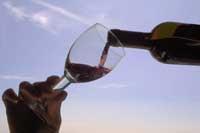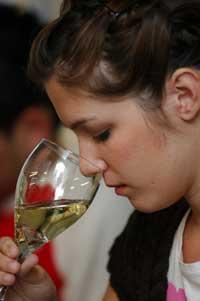Art and science of wine tasting

To measure the quality of a wine, it is essential to taste it. In fact, the best tasters ensure that in the wine tasting the footprint of each step in the production of the wine is appreciated.
The current technology allows to measure the color of a certain wine, its density, etc. and analyze it from a chemical point of view. Wine is a dissolution and, if analyzed, the components of it are known, all the molecules that form a certain wine can be identified. But that is not enough to know if that wine is of quality or not; knowing the ingredients does not give us clues of the flavor of the mixture.
In addition, for the moment, the analysis of this type of wine takes a lot. Therefore, the work of the catcher is irreplaceable.
But the work of the catcher is not easy. In each tasting it must be impartial, it has no influence: it must describe in detail the parameters of the wine. It requires discipline and concentration and is a very systematic work.

To start with, choose the right environment to perform the tasting. Due to its high concentration, the tasting room is usually very silent. In addition, it is not convenient that there is something that confuses the senses, for example, there is no odors.
Senses and molecules
The feeling that generates a wine is the sum of the senses. The view allows you to see the color and transparency of the wine. As for smell, when the wine is in the cup, the smell is collected directly with the nose, but when it gets into the mouth the smell is also received, and when it is ingested and ingested, the smell goes up the throat. Through taste different flavors are distinguished: sweet, salty, acid and bitter. And thanks to touch is observed the structure of the wine, the firmness, the solidity or volume and the aridity, that is, the feeling of dry.
Many of these sensations are identified. In sweet flavor, in addition to sugars, alcohol and glycerol also act. The acid flavor, on the contrary, is due to acids, such as tartaric, malic and citric. And the bitter taste is the influence of tannins: in the wine are concentrated the grape tannins, the grape seeds and the barricanas. These tannins react in the mouth with saliva proteins and produce a feeling of dryness.

In addition, there are eleven other compounds that influence the taste or sensations of wine. And the wines are characterized by their proportion. In fact, it influences the composition of the wine, such as the type of grape, the times of collection, the storage, the aging times of the barrel (in his case), etc. Each step in the production of wine influences the final composition of the wine.
The wine tasters receive the sensations of the final wine, in which are found the compounds generated in each step of the production.
Published in 7K.
Buletina
Bidali zure helbide elektronikoa eta jaso asteroko buletina zure sarrera-ontzian











